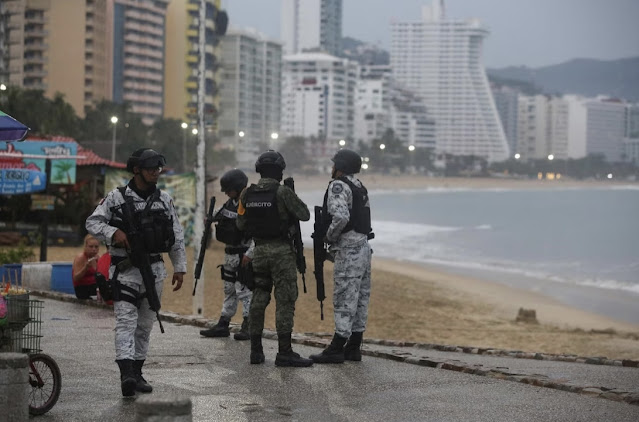US Nuclear Submarine Deploys to the Middle East Amid Israel-Hamas Conflict
US Nuclear Submarine Deploys to the Middle East Amid Israel-Hamas Conflict
| Captured Image Suggests a Deployed Guided Missile Submarine |
In a move aimed at exerting influence and showcasing military might, the US Navy has dispatched a guided-missile submarine to the Middle East, marking the latest development in a growing US military presence in the region amidst the ongoing Israel-Hamas conflict.
This deployment was publicly announced by the military in a late-night statement on Sunday, revealing the unusual decision to disclose the location of this powerful vessel, which is equipped with the capability to launch nuclear missiles. It is seen as a strategic maneuver intended to help manage regional tensions during a critical period in the Israel-Hamas conflict.
The statement from the US Central Command (CENTCOM) was made on November 5, 2023, and it confirmed the submarine's arrival in the CENTCOM area of responsibility, which encompasses the Middle East. This unprecedented revelation on a social media platform was accompanied by what appeared to be an image of the submarine transiting the Suez Canal.
The United States has undertaken significant military deployments to the Middle East since the outbreak of hostilities on October 7 between Hamas and Israel, one of America's closest regional allies. This escalation in military presence includes the deployment of two aircraft carriers and a substantial number of fighter aircraft. Furthermore, the US announced the dispatch of approximately 1,000 American soldiers and the engagement of an unspecified number of special operations commandos who are providing advisory support to the Israeli military in their Gaza operations.
In addition to bolstering its military presence in the region, the US has taken measures to enhance the defense capabilities of its Gulf allies. Saudi Arabia is set to receive the Terminal High Altitude Area Defense (THAAD) missile defense system, while Patriot surface-to-air missile systems are planned for deployment to Kuwait, Jordan, Iraq, Saudi Arabia, Qatar, and the United Arab Emirates. These actions were reported by The Wall Street Journal.
Pentagon spokesperson Brigadier General Pat Ryder has emphasized that this military buildup is designed to deter the escalation of regional tensions and to safeguard the interests of the United States and its partners. He has made it clear that the US does not want to see the Israel-Hamas situation evolve into a broader regional conflict. This sentiment has been echoed by President Biden, Secretary of Defense Austin, and other high-ranking US officials.
Secretary of State Antony Blinken embarked on a diplomatic mission on Sunday to engage with regional leaders, including meetings with Palestinian President Mahmoud Abbas in the occupied West Bank and Iraqi Prime Minister Mohammed Shia al-Sudani in Baghdad. These diplomatic efforts underscore the US commitment to finding a resolution to the ongoing crisis.
However, the increased US military presence in the Middle East has not been without its challenges. US military assets have been targeted by Iran-aligned militias in Syria and Iraq since the outbreak of hostilities on October 7. These groups have carried out numerous attacks on US bases, with one of the most severe incidents occurring on October 17 and 18, when 21 US military personnel were injured in attacks on the al-Tanf garrison in Syria and Al Asad Air Base in Iraq.
In summary, the deployment of a US nuclear submarine to the Middle East marks a significant development in the ongoing Israel-Hamas conflict and is part of a broader US strategy to influence the situation and protect its interests in the region. While diplomatic efforts are underway, the military build-up serves as a clear message that the United States is committed to preventing the conflict from escalating into a wider regional crisis.






